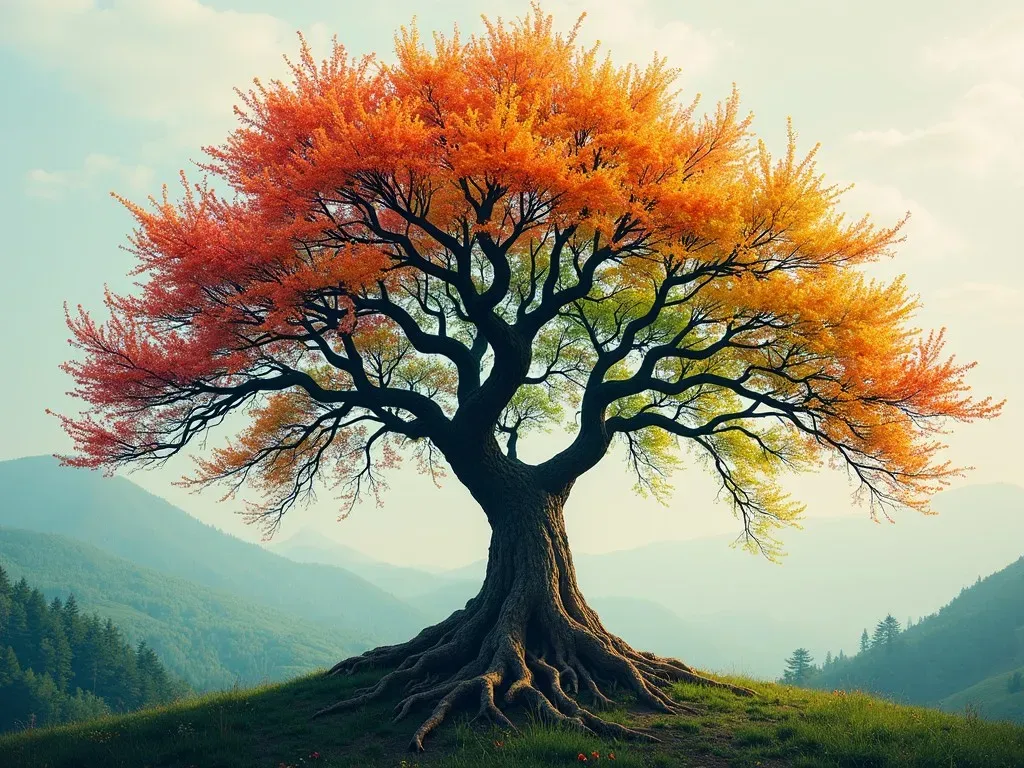Art trees paintings encapsulate the grandeur and tranquility of nature, showcasing the magnificent beauty of trees through various artistic styles. These captivating artworks evoke emotions and connect viewers to the serene wilderness, transforming spaces within homes and galleries. With vibrant colors, intricate details, and powerful symbolism, tree paintings have become a favorite subject for many artists around the world.
Trees play a crucial role not only in our environment but also in art history. From the delicate brushstrokes of Impressionism to the vivid colors of Abstract Expressionism, the portrayal of trees has evolved, reflecting cultural sentiments and artistic innovation. This article dives deep into the enchanting world of art trees paintings, exploring various styles and famous artists who have brought these natural wonders to life on canvas.
The History of Trees in Art
Historically, trees have held significant symbolism in art, often representing life, wisdom, and connection to nature. Here are some notable periods when tree paintings flourished:
| Period | Characteristics | Famous Artists |
|---|---|---|
| Renaissance | Emphasis on realism and naturalism, highlighting trees in landscapes | Leonardo da Vinci, Michelangelo |
| Impressionism | Focused on capturing light and movement, portraying trees in varied atmospheres | claude monet, Camille Pissarro |
| Post-Impressionism | Expressive use of color and form to convey emotional content | Vincent van Gogh, Paul Cézanne |
| Modern Art | Abstraction and surrealism brought new interpretations of trees in art | Wassily Kandinsky, Piet Mondrian |
Trees have often been used as focal points in landscape paintings. Famous artists depict trees not only as elements of nature but also as symbols of life, growth, and even emotional states. The intricate relationship between humankind and trees prompted artists to explore their forms and characteristics uniquely.
Notable Tree Paintings and Artists
The following are some of the most famous tree paintings that have shaped the art world:
-
The Almond Blossoms – Vincent van Gogh
- This work is celebrated for its delicate portrayal of blossoming trees that symbolizes rebirth and hope.
-
The Avenue of Chestnut Trees – Claude Monet
- A striking representation characterized by the vibrant play of light filtering through the leaves.
-
Cypress Tree – Vincent van Gogh
- Featured in the Starry Night, the cypress serves as a spiritual bridge between nature and the heavens.
-
The Poplars on the Epte – Claude Monet
- Monet captures the ethereal quality of light as it filters through a row of poplars, showcasing the dynamic essence of trees.
Symbolism in Tree Art
Tree paintings often carry deep meanings and symbolize various elements. Here’s a list of common interpretations associated with tree art:
- Growth and Renewal: Trees are a representation of life cycles and regeneration.
- Stability: In many cultures, trees symbolize strength and endurance.
- Connection to Nature: Trees illustrate humanity’s relationship with the natural world.
- Wisdom: Trees are often seen as vessels of knowledge and experience, standing tall through the years.
Modern Interpretations of Tree Art
Today, contemporary artists continue to explore the subject of trees in innovative ways. Techniques vary widely, from traditional oil paintings to mixed media and digital art. Artists often incorporate elements of abstraction to reflect personal feelings or current environmental concerns. The rise of eco-art has also brought attention to the importance of trees and forests in light of climate change, creating a dialogue between art and environmentalism.
Colorful Paintings of Trees
Color is a powerful tool in art, affecting emotion and perception. Let’s explore some captivating and colorful tree paintings:
| Painting Name | Artist | Medium | Color Palette |
|---|---|---|---|
| The Enchanted Forest | Ann Marie McCarthy | Acrylic on Canvas | Vivid greens, blues, and golds |
| Autumn Leaves | Peter L. Johnson | Oil on Canvas | Warm oranges, reds, and yellows |
| Cherry Blossoms | Yayoi Kusama | Mixed Media | Soft pinks and whites |
These paintings showcase how color can elicit emotions and convey the beauty of the natural world, making them perfect for various spaces.
Famous Artists Who Paint Trees
The fascination with trees has attracted numerous artists throughout history. Notable Artists include:
- Vincent van Gogh: Known for his swirling brushstrokes and emotional depth, van Gogh frequently captured the beauty of trees in his works.
- Claude Monet: His Impressionistic style brought trees to life with color and light, emphasizing their place in the landscape.
- Georgia O’Keeffe: Often incorporating trees within her larger landscapes, O’Keeffe’s work reflects a deep connection to nature.
FAQ
Q: What materials are commonly used in tree paintings?
A: Artists often utilize acrylics, oils, watercolor, and mixed media in tree paintings. Each material offers different textures and vibrancy.
Q: Can tree paintings be found in different styles?
A: Yes! Tree paintings can range from realistic depictions to abstract interpretations, including impressionism, expressionism, and contemporary styles.
Q: How do tree paintings benefit interior design?
A: Incorporating tree paintings into interiors can enhance the atmosphere, promote tranquility, and bring a touch of nature indoors.
Q: What are common themes in tree paintings?
A: Common themes include seasons, light, shadow, growth, and the interaction between nature and human experiences.
Q: Are there any online resources to explore tree art further?
A: Yes, you can find extensive information on the subject by visiting Google Arts & Culture, which provides insights and various artworks featuring trees.
Tree paintings remain an enduring favorite in the art world, captivating audiences with their beauty and intricate symbolism. Artists continue to draw Inspiration from the natural world, ensuring that the legacy of tree art will thrive for generations to come.
